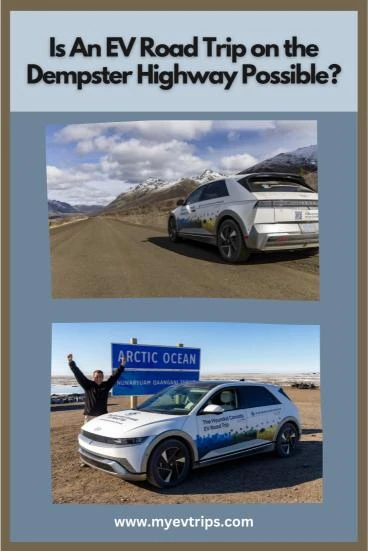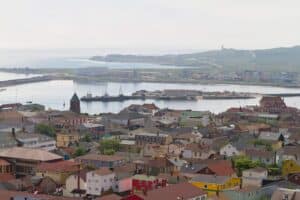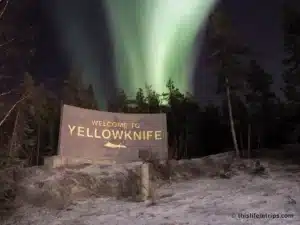As I make my way toward Yellowknife on my current EV road trip, one reality has become clear: there are vast stretches of Canada that remain charger barren.
These quiet, wild regions come with a unique sense of awe—but also a unique set of challenges for those of us behind the wheel of an electric vehicle. And with my fall trip to Tuktoyaktuk and the Arctic Ocean looming, it felt like the right time to reach out to someone who’s been there, done that, and charged through it all.
Enter Patrick Nadeau, who completed an epic 19,743-kilometer journey from Markham, Ontario to Tuktoyaktuk and back in a Hyundai Ioniq 5, proving that the Dempster Highway isn’t just for diesel trucks and lifted SUVs.
We caught up to talk terrain, charging tactics, and what it really takes to EV your way to the top of the world.
1. EV Road Trip on the Dempster Highway
MYEV: Can you briefly outline your route across Canada—from Markham, Ontario to Tuktoyaktuk and back—what inspired the idea of going coast to coast to coast in an electric vehicle?
PN: I started my journey at Hyundai’s Canadian HQ in Markham, then drove through Fernie and onto Vancouver Island for the Ioniq 9 launch.
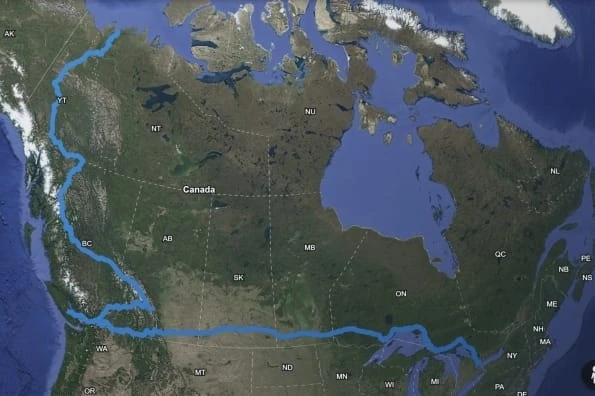
From there, I doubled back through Banff and Jasper to shoot VR content for pediatric oncology centers as part of Hyundai’s Hope on Wheels. After that, I headed north via Prince George, Whitehorse, Dawson City, and finally to Tuktoyaktuk.
That’s the end of the road in Canada—you literally can’t drive any further. I returned the same way due to wildfire closures. The whole trip was 19,743 kilometers over two months.
MYEV: How long did the trip take overall, and how much planning went into the more remote segments?
PN: The journey lasted exactly two months—from April 24th to June 24th. But it took around eight months of planning, especially the northern and off-grid legs.
2. Challenges of Electric Vehicle Travel to the Arctic
MYEV: I’m planning my own EV trip to Tuktoyaktuk this fall and am curious about your Dempster experience. How did it compare to what you expected?
PN: It was exactly as hard as I feared—and then some. The road is gravel, and I lost around 15% of my range. I hit two days of rain that turned everything to thick mud and even had snow in early June.
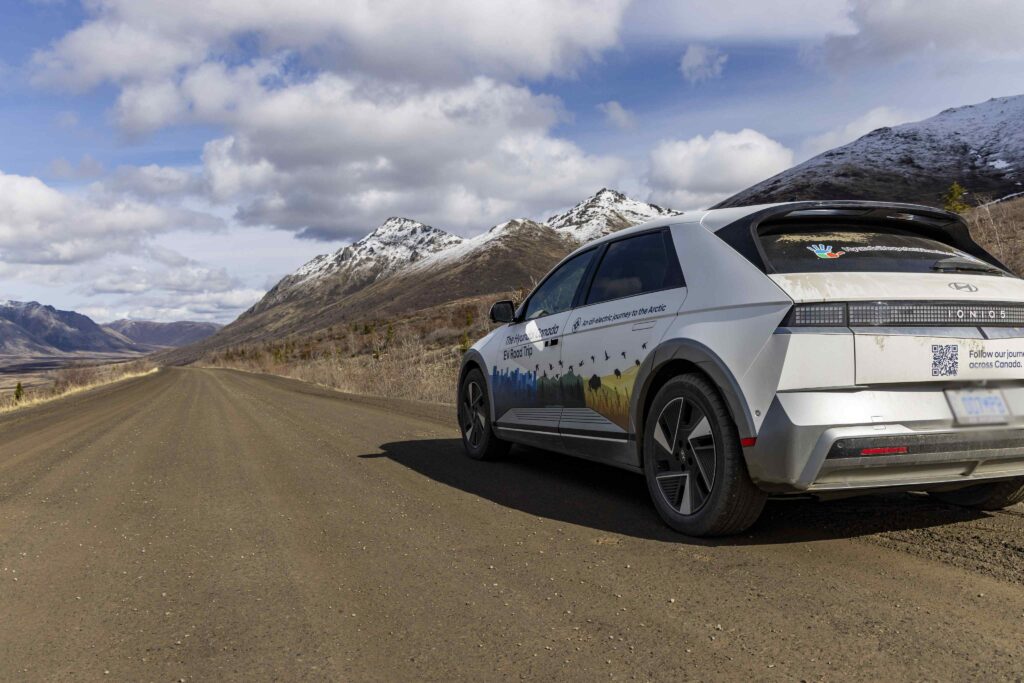
The Peel River ferry was out for nearly a week because its vehicle ramp had washed away, and when I finally crossed, it closed again right after.
And of course, wildfires shut things down on my way back. You really earn every kilometer on the Dempster. Nature dictates everything.
MYEV: I heard you ran into charging issues in Eagle Plains—how did you manage?
PN: I brought a Level 2 charger that plugs into a 220V outlet—lifesaver. Eagle Plains’ Tesla charger didn’t work due to a firmware issue.
My charger didn’t fit their socket at first, but luckily they had an adapter. It’s essential to pack various charging cables and adapters. There are barely any campgrounds with 220V out there, so plan carefully.
Without my charger, I’d have been stuck using a 110V outlet—that would’ve added a week to my trip. And remember: there’s no alternate route. The Dempster is it.
MYEV: I recently ran a battery health check and have 9% degradation. Would you consider the Dempster doable in a Tesla Model Y Long Range with 465 km of max range?
PN: That’s about what I had in my AWD Ioniq 5. It’s doable if you’re cautious. Start in good weather and avoid rain if possible. The Model Y sits lower, but should be fine.
Go in summer and bring a spare tire and plug kit—CAA won’t help you out there. Drive 50-60 km/h for range and safety.
Driving through the Yukon and Northwest Territories added a whole new level of complexity—especially when it came to charging an EV on remote Canadian highways.
These areas lack consistent infrastructure, and drivers have to rely on careful planning and a healthy dose of patience.
3. Energy Conservation on Remote Canadian Highways
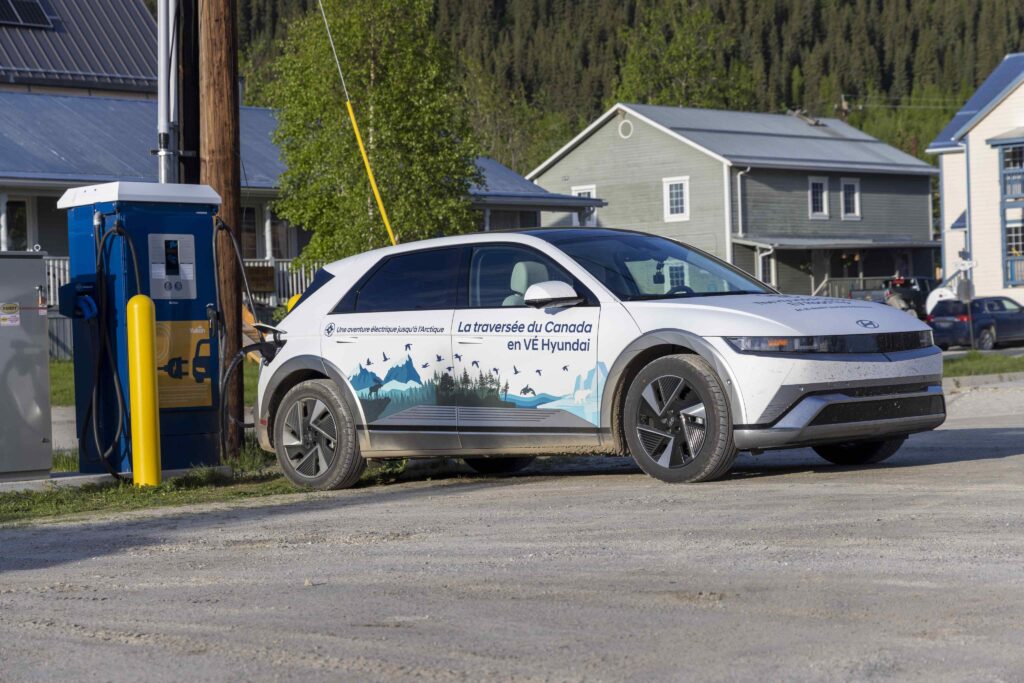
MYEV: Did you adjust your driving style to conserve battery?
PN: Yes. I stuck to 50-60 km/h, and at one point between Eagle Plains and Inuvik, I hit 0% battery and triggered turtle mode. I had maybe 15-20 km left and crawled along at 40 km/h on muddy roads.
On my return, the road was dry and warmer, and I made it with 17% remaining—and that stretch was uphill.
MYEV: Did you have a plan for charging failures?
PN: Not really. From Markham to Dawson City, there are enough chargers that you can always find a Plan B. But on the Dempster, there is no backup. I refused to bring a generator because I wanted to prove you could do this trip on electricity alone.
4. Charging Infrastructure Across Canada
MYEV: How would you rank Canada’s provinces for EV charging?
PN: Ontario through Alberta along the Trans-Canada Highway is decent, especially thanks to Electric Circuit. BC and Yukon are solid, with many free chargers from Prince George to Dawson.
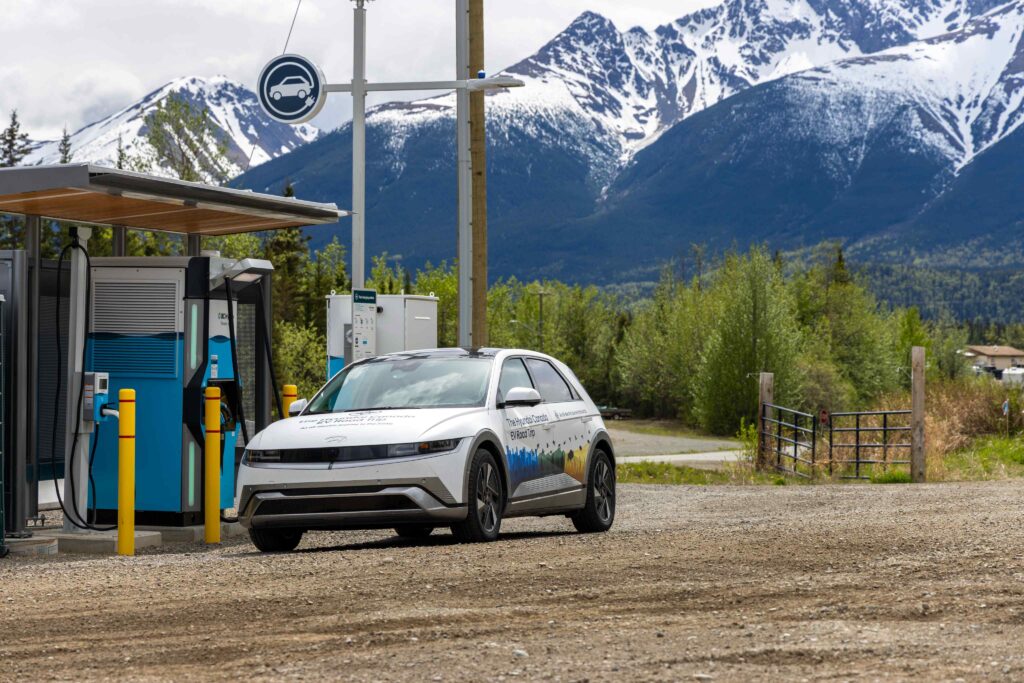
Even if some are only 50 kW, they’re reliable. The Co-op stations in Alberta and BC are my favorites: they’ve got windshield washing, vacuums, and even trailer-friendly bays.
READ MORE: Canada’s Provinces Ranked by EV Friendliness
MYEV: Any favorite apps or maps?
PN: I plan with ABRP and use PlugShare daily. Google Maps is a must. My Ioniq 5 also works with Tesla chargers, which helps. Petro-Canada chargers are decent, and Co-op’s are gold standard.
5. Comparing to Your Mexico Trip
MYEV: How did this compare to your EV trip to Mexico?
PN: I drove nearly 5,000 km more on the Arctic trip. Colder temps affected the battery more, but no language barrier helped.
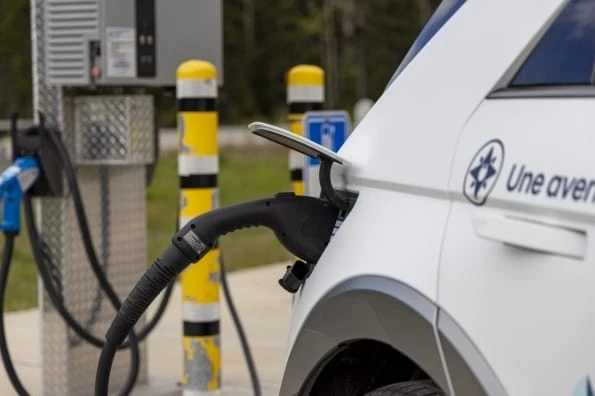
There were no public chargers on my Mexico route, whereas this time, even in remote areas, some infrastructure existed. The Dempster was still tougher than anything in Mexico—some stretches were 400 km with no plug at all.
MYEV: Which was more stressful and more rewarding?
PN: Mexico was more stressful because I was new to EVs. For the Arctic, I had experience and confidence, though I still worried about the Dempster.
But reaching the Arctic Ocean in an EV felt huge. It proved EVs can do anything. Plus, I was filming VR content for kids with cancer. That made everything more meaningful.
6. Highlights & Challenges
MYEV: What was the most unexpected challenge?
PN: Wildlife! I saw at least 15 bears, wolves, a wolverine, and caribou. I nearly hit a family of grizzlies. Also, the loneliness was tough. Waiting for a ferry with no idea if it’ll be days or weeks can really wear on you.
MYEV: How did it feel reaching Tuktoyaktuk?
PN: Emotional. Being that far north, in your own country, with your wheels in the Arctic Ocean—it’s powerful. I was proud. And knowing the Hyundai Canada team was cheering me on added even more meaning.
MYEV: Any hidden gems?
PN: The Stewart Highway in BC. Short, scenic, full of glaciers and bears—and barely any tourists. But honestly, the entire stretch from the Rockies to the Arctic is something special.
7. Final Thoughts & Advice
MYEV: Tell us more about the Hyundai Hope on Wheels connection.
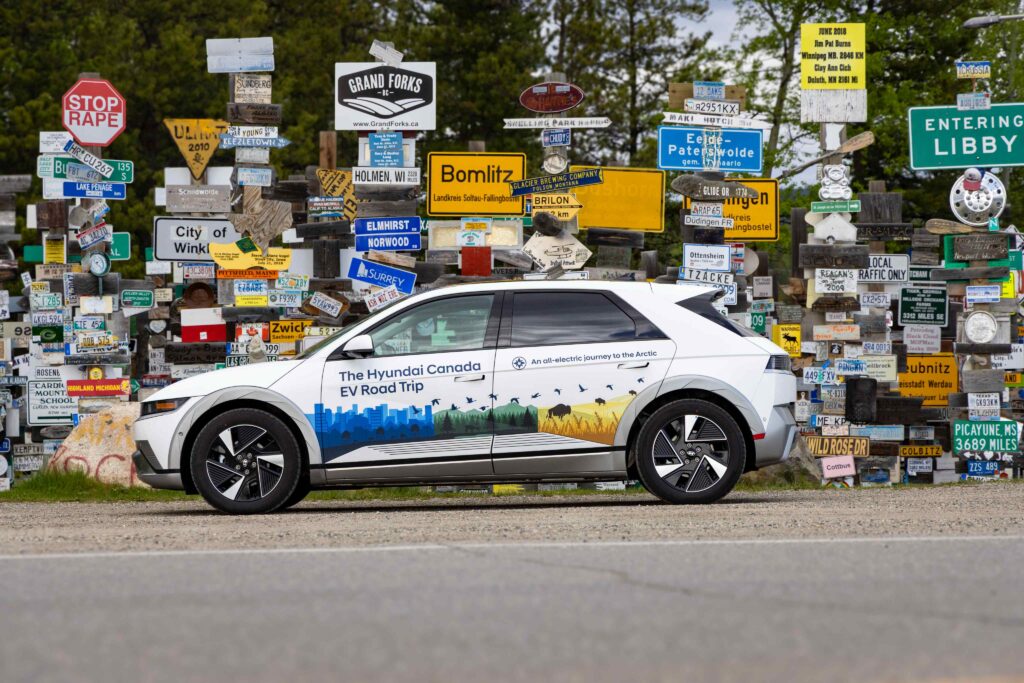
PN: Hyundai reached out after my Mexico trip. They saw potential to bust EV myths, and I joined the Ioniq 6 launch in Vancouver. That evolved into this trip. I added my own layer by filming immersive content for pediatric oncology centers.
We kept the car stock aside from branding. The response was amazing—millions of views, messages, even dinner invites from followers.
MYEV: Did EV travel save you money on this trip?
PN: Definitely. I spent about $1,403 CAD on electricity vs. an estimated $2,800 CAD on gas. That’s nearly 50% savings.
Plus, 90% of charging in everyday life happens at home, so it’s even more economical normally. My stops were based on human needs—not range. It’s a road trip, not a race.
MYEV: One key tip for my fall trip?
PN: Watch the weather. Pack patience and buffer days. Nature decides if you get to Tuk.
electric vehicle travel to the Arctic is Doable
Talking with Patrick Nadeau reinforced just how much planning, flexibility, and patience this kind of journey demands—but also how incredibly rewarding it can be.
His success driving the Dempster Highway in an EV proves it’s possible, even with setbacks and surprises.
As I head deeper into Canada’s charger-less north on my road trip plan to Yellowknife, I’ll be drawing on Patrick’s experience to guide my own.
If you’re thinking about your own EV adventure, whether that’s a road trip plan to the Yukon or simply gearing up with the right road trip accessories or accessories to keep the car protected, know that the path is doable.
You just have to be ready to roll with whatever the road throws at you. And prep your gear: check out my tips on charging cables and adapters, floor mats, car camping accessories, and the best Tesla bed if you’re sleeping in your EV. Taking a Starlink for safety is also a good idea.
Long-distance electric vehicle travel to the Arctic is absolutely within reach—as long as you plan smart and stay flexible.
